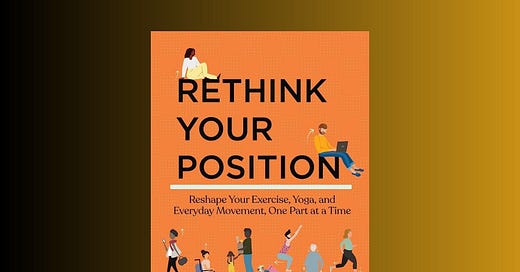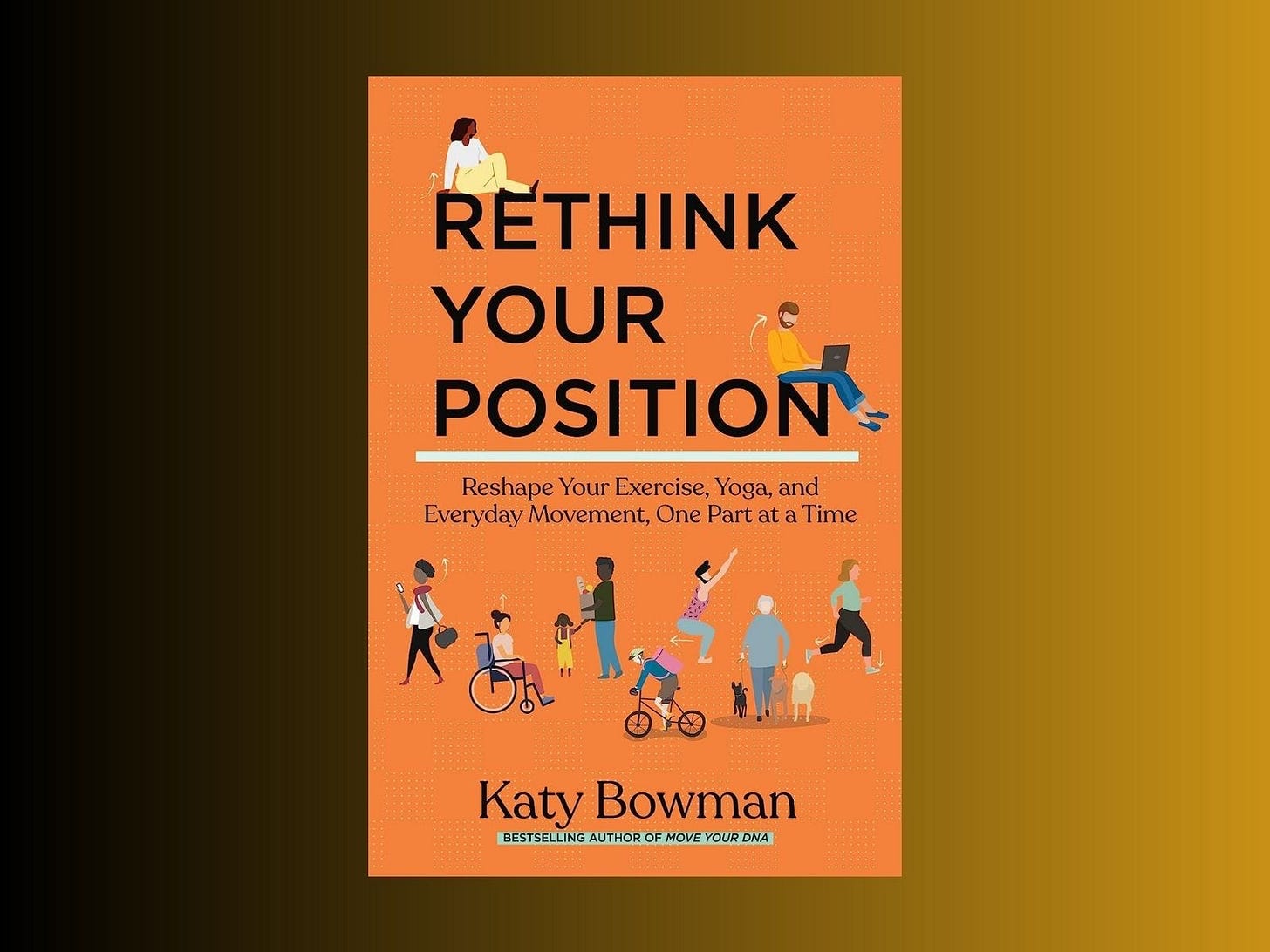Correct posture can improve your rucking, walking, and lifting and fix the most common pain Americans face. You’ll learn: How to find the ideal posture, signs your ruck is too heavy, and more.
Notes
Monday posts are always full accessible to everyone.
If you want full access to Wednesday and Friday posts along with their audio versions, become a Member below.
My goal with Membership is to help Members get far more value than the monthly fee. So far I’ve received a ton of emails from Members saying we’re doing just that.
I’m writing and recording this from a hotel room in San Francisco after seeing the final Dead & Company show last night. For the ~11 other Deadheads who read 2%, here’s the setlist.
I got cozy with the research on rucking and back pain while researching my book The Comfort Crisis. Luckily one of those things, rucking, can help fix the other, back pain. But there are subtle tweaks you can make to rucking to get more out of it—more fitness, resilience, etc.
To understand how these two topics interconnect, let’s start with back pain.
Back pain is popular in the sense that McDonald’s is popular—more than a billion served.
Research suggests that 80 percent of people in developed countries will experience back pain sometime in their lives. A quarter of Americans say they’ve had it in the last few months, according to the National Institutes of Health.
The good news is that back pain is mostly preventable.
A bad back can happen for reasons a doctor can see with a scan. Like an injured disk, tumor, or osteoporosis.
But 85 percent of this pain comes from mysterious “nonspecific” sources. Scientists at Harvard estimate that 97 percent of nonspecific back pain is caused by how we live in the modern world.
It results from a nasty combo: too much sitting, poor posture, and not enough physical activity.
This trio makes us fragile. We become weak and adapt to odd positions.
Then when we lift something—this could be a weight in the gym or a box on our porch—we can’t handle the weight, and it goes somewhere it shouldn't. Pain pops up.
There are solutions. And Katy Bowman has them. She’s a biomechanist and author of the new book Rethink Your Position. Today we’re covering ideal posture and making a few changes to your environment and habits.
Katy *gets* the 2% ethos. Here are a few paragraphs I pulled from a description of Rethink Your Position that Bowman published on her website:
Every day we make hundreds of choices about how to move our bodies.
Will we walk, or will we drive? Will we sit, or will we stand? Will we slouch or sit up tall? … All day long we make choices about the positions we place ourselves in, and how often we vary our body position, whether we realize it or not.
While disabilities might immobilize us or parts of us, by and large we have uncountable choices to make about how we move. The problem is, we make most of those choices subconsciously, usually choosing the move that’s easiest in the moment, and we suffer long term consequences for not being more deliberate in our approach to using our body.
… Bodies start to hurt when they aren’t moved enough, but also because when they are moved, some parts aren’t moving with ease. This then makes it harder to move enough, and our movements get more diminished, immobility and pain arises, and we think it’s all inevitable.
It’s not inevitable.
So how do we make it not inevitable? One way is to fix our most fundamental position: how we stand.
Bowman’s wisdom can not only bolster your back, but also help you ruck better and be a higher-performing and more resilient human. Katy is changing how we think about movement, and her new book is filled with ways to move better.
Leverage the “neutral spine” posture
In short
Keeping your spine in “neutral” improves your movement, balance, and stability while strengthening your back.
The details
The average human used to walk about 20,000 steps a day. Now most Americans take less than 5,000 and spend their days sitting while hunched over phones and computers. This has changed us in many ways.
Posture is one of those ways. Hours of sitting while slumped into a screen, Bowman said, flattens your spine in your neck area and rounds your upper back.
Exercising with that wonky spine—whether you’re rucking or lifting weight overhead—can lead to pain. Or, at least, make you work from something of a deficit.
Think of it like a car with a slightly warped frame. The car is fine when it’s parked. Accelerate the car, however, and you might have some issues.
Hence, we need to rediscover our spine’s happy place.
Here’s how to find it.
Stack your hips directly above your knees and ankle joints in a vertical line.
Center your pelvis. Your pelvis can tilt both forward and backward. Your pelvis’ top should be its bottom.
Redact your ribcage. When we “stand up straight,” we often tip our shoulders back and move the bottom of our ribcage forward. This can compress our lower back.
The fix: Tip the top of your ribcage forward so it is stacked over the front of your pelvis.
Be aware: If you are used to moving the bottom of your ribcage forward to feel like you’re standing straight, this will feel like you’re slouching (the next step will help reduce that feeling).Slide your head back. Reach the top of your head toward the ceiling while sliding your head back (don’t lift your chin). This should feel like you’re bringing your ears back over your shoulders—all while keeping your ribcage in position three.
A spine aligned in these natural curves is called a “neutral spine,’” Bowman writes.
It’s how our bodies naturally want to “be,” she explains—but we lose touch with this posture when we sit too much.
Remember these cues. It can take some work to get at first. But keep reminding yourself, and your posture will improve—which means everything else you do physically will also improve.
Apply it to rucking and walking
In short
A good carrying and rucking position should look about the same as the neutral spine posture. Otherwise, your weight is too heavy.
The details
Carrying is a uniquely human skill. Compared to other animals, we’re losers in sprinting, jumping, and climbing competitions. But we can carry heavy things for miles and miles.
Which brings us back to the neutral spine. Bowman says that our natural spine shape is one reason we’re good at carrying.
“(The shape) helps the parts of the spine—the bones, discs, ligaments, tendons, and muscles—carry loads efficiently and with minimal damage,” she writes in her book.
When you ruck, Bowman says your posture should only slightly deviate from that “neutral spine” position.
“Moving slightly out of a ‘neutral spine’ position is a part of carrying things on your back,” she writes. “That said, a significant change in position with added weight can also indicate that the load is too much for your current core or leg strength.”
A sign your ruck is too heavy: “You’ll slide your ribcage forward or lean your torso forward to keep the backpack from tipping you backward, just as you might when giving a kid a piggyback ride.”
Researchers in Canada believe rucking (walking while carrying a weighted backpack or rucksack) can help relieve and prevent back pain because the weight “pulls” your spine into a position that compresses its discs less. But going too heavy too far and often can reverse that.
A good strong carry allows you to “maintain pretty close to the neutral spine alignment throughout most of your trek,” Bowman said.
Your fix is simple: If you slip significantly out of the neutral spine, lessen the load for your average ruck.
Yes, it’s OK and even beneficial to push it every now and then. Like, in my case, when Jason McCarthy recruited me to do the One-Mile, 100-Pound Challenge.
But most of your rucks, most of the time, should be at a weight that allows you to move while maintaining that solid position. For example, I use a 30-pound plate for most of my rucks, which is about 16 to 17 percent of my body weight.
As your fitness increases, you can bump up the weight while standing well.
Have fun, don’t die, and keep on ruckin’.
-Michael
Sponsored by Momentous
Momentous made me feel good about supplements again. Over 150 professional and collegiate sports teams and the US Military trust their products, thanks to the company’s rigorous science and testing. I don’t have the time or desire to cook perfectly balanced meals that give me all the necessary nutrients and protein I need (let’s face it, few of us do!). So I use their collagen in the morning; Recovery protein during hard workouts; essential multivitamin to cover my bases; creatine because it’s associated with all sorts of great things; and Fuel on my longest endurance workouts on 100+ degree days here in the desert (because Rule 2: Don’t die). And I also love (love!) that Momentous is researching and developing women-specific performance supplements. Use discount code EASTER for 15% off.
Sponsored by Maui Nui Venison
Axis Deer provides the healthiest meat on the planet. That's according to researchers at Utah State, who compared axis deer meat to beef and found that it contains 1 to 64 times more antioxidants, vitamins, minerals, and healthy fats. It also contains 53% more protein per calorie than beef. Here's a fascinating brief on the research. Equally important is that Maui Nui solves ethical considerations around meat. Axis Deer are an invasive species ravaging the Hawaiian island of Maui, and Maui Nui harvests the deer at night in a stress-free way, improving the ecosystem.
My picks: I like it and eat everything from Maui Nui, but the 90/10 Organ Blend is particularly great for people looking to get more micronutrients in their diet, and the Jerky Sticks are my go-to travel snack. Use discount code EASTER for 15% off.
Sponsored by GORUCK
When I decided to accept sponsorships for this newsletter, GORUCK was a natural fit. Not only is the company's story included in The Comfort Crisis, but I've been using GORUCK's gear since the brand was founded. Seriously. They've been around ~12 years and I still regularly use a pack of theirs that is 11 years old. Their gear is made in the USA by former Special Forces soldiers. They make my favorite rucking setup: A Rucker 4.0 and Ruck Plate. Use discount code EASTER for 10% off anything from GORUCK.





Great post and would like a link to see how to follow those 4 steps to stand correctly for those of us that are mind/bodily-challenged re getting those positions right and have a hard time visualizing.
The top of the pelvis is the bottom? Agree with @jeff, would love to see a video explaining those 4 steps. Whenever I read anything about how to position the body and do an exercise, I just never fully get it….